Regenerating Tooth Enamel: A Comprehensive Exploration
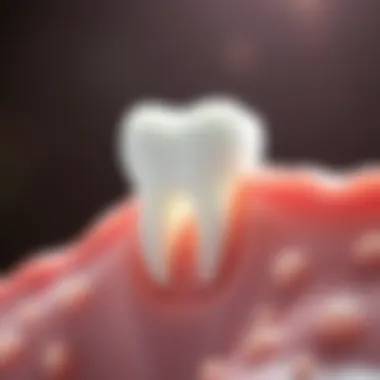
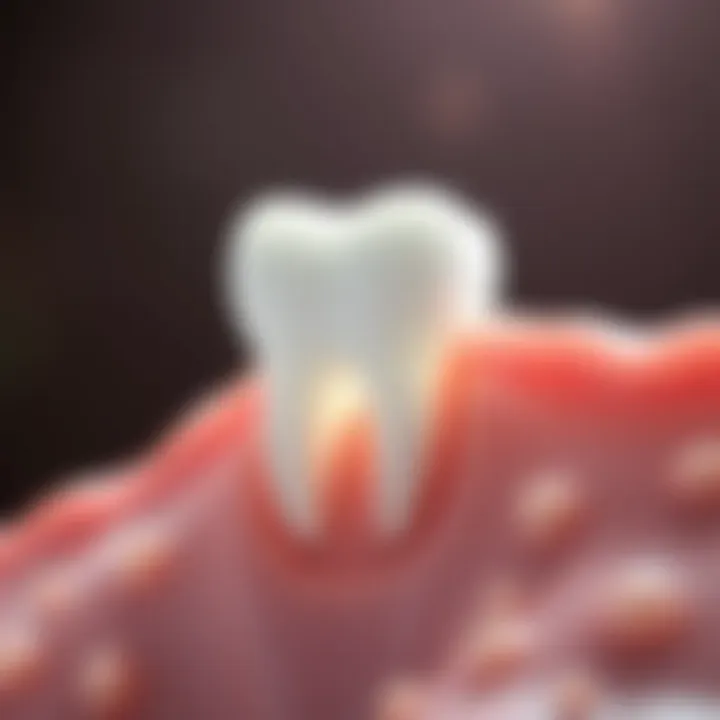
Overview of Research Topic
Brief Background and Context
Tooth enamel, the hard and protective outer layer of teeth, is the most resilient tissue in the human body. However, it is not impervious, as various factors can lead to its degradation. This wear and tear primarily emerge from dietary habits, oral hygiene practices, and environmental influences. Over time, acids produced by bacteria in the mouth, combined with exposure to sugary substances, can erode the enamel. The loss of enamel not only leads to aesthetic concerns but can also cause significant health issues, including increased sensitivity and a higher risk of cavities.
Recent advances in dental science have sparked interest in the potential to regenerate tooth enamel. Researchers are keen to understand whether, through innovative materials or biological techniques, the body can repair or replace damaged enamel. By exploring the mechanisms behind enamel formation and deterioration, scientists aim to establish methods that restore enamel to its original state, thus improving dental health and longevity.
Importance in Current Scientific Landscape
The exploration of enamel regeneration holds significant meaning in today's healthcare environment. As populations continue to age, the prevalence of dental issues mounts, prompting a need for effective solutions. The current solutions, such as fillings or crowns, are often temporary and can lead to further complications down the line.
Innovations in this area have the potential to transform restorative dentistry. For instance, materials capable of mimicking the biological properties of enamel are the subject of intense research. These developments are not only critical for restoring aesthetics but may also significantly improve the quality of life for many individuals. In an era where proactive health measures are increasingly favored, understanding enamel regeneration could shift the narrative from reactive dentistry to preventive care.
Methodology
Research Design and Approach
To thoroughly investigate the avenues of enamel regeneration, a multi-faceted research design is essential. Studies often focus on biological, chemical, and material sciences to paint a complete picture of the enamel regeneration landscape. Collaborative efforts among dentists, materials scientists, and biologists help shape a comprehensive approach.
The studies may utilize both clinical trials and laboratory experiments. For instance, laboratory settings allow researchers to examine the effects of various therapeutic agents on extracted enamel samples, providing a controlled environment devoid of external influences.
Data Collection Techniques
Various techniques come into play when gathering data regarding enamel regeneration. Among the most commonly used methods are:
- Spectroscopic Analysis: This technique helps determine the structural integrity of enamel samples by analyzing the light interactions within the materials.
- Mechanical Testing: To evaluate the strength and durability of regenerated enamel, researchers conduct tests that mimic the forces teeth endure daily.
- Histological Examination: This involves microscopic analysis of biological samples to assess changes at the cellular level, offering insights into the effectiveness of various regeneration methods.
Research in enamel regeneration is a hotbed for scientists and dental practitioners. By integrating advanced methodologies and diverse disciplinary perspectives, the knowledge base surrounding this vital area of oral health continues to expand.
Understanding Tooth Enamel
Tooth enamel plays a crucial role in oral health, serving as the first line of defense against physical and chemical influences that can damage teeth. Understanding tooth enamel is not just about recognizing its structure; it's about grasping how it contributes to both aesthetic and functional aspects of dental health. Each facet of enamel warrants attention, as it comprises a complex interplay of mineral composition, biological formation processes, and environmental interactions. Enhancing our understanding of tooth enamel helps in crafting better preventive and therapeutic strategies against dental issues.
Composition of Tooth Enamel
Hydroxyapatite structure
At the core of tooth enamel lies hydroxyapatite, a mineral that forms the basic building blocks. This crystalline structure is primarily composed of calcium and phosphate ions, culminating in a tough and resilient form of enamel. One of the standout attributes of hydroxyapatite is its durability, making it well-suited for withstanding the daily grind of biting and chewing.
Moreover, hydroxyapatite is not just about being tough. The unique arrangement of its crystals allows for a high degree of mineral density, which is paramount for enamel strength. Its role in the context of tooth enamel regeneration is also significant. Researchers often explore hydroxyapatite because it has a remarkable affinity for biological tissues, allowing potential integration into existing tooth structures. Yet, while hydroxyapatite demonstrates impressive advantages for enamel health, it is essential to note that its effectiveness can be compromised by factors like acid exposure, which can lead to dissolution and weakening over time.
Mineral density and strength
The mineral density of tooth enamel is a key characteristic that underlines its strength and resilience. It is primarily the concentration of hydroxyapatite that gives enamel its hard nature, allowing it to protect teeth from decay. A prime feature of mineral density is how it serves as an indicator of overall enamel health; higher density usually means stronger enamel capable of resisting erosive forces encountered from food and bacteria.
However, it's a double-edged sword. While dense enamel offers protection, if mineral density declines due to wear or acidity, the risk of decay increases significantly. Thus, ongoing assessments of mineral density can pave the way for interventions aimed at reinforcing enamel structure. Innovations in dental care often focus on bolstering mineral density as a strategy to prevent enamel erosion, making it a focal point in regenerative dentistry discussions.
Role of organic components
Tooth enamel isn’t just an inorganic shell; it also contains organic components that play a vital role in maintaining its structure and function. These organic materials, including proteins and lipids, contribute to the overall integrity of enamel. One interesting aspect is how these organic components help dictate how the enamel interacts with surrounding tissues; they play a role in the remineralization process, subtly influencing how enamel can recover from early stages of decay.
Additionally, organic components can affect enamel's response to external challenges, like the presence of acids and bacterial activity. Fine-tuning the organic matrix might provide pathways for innovative enamel regeneration techniques. Nevertheless, over time and with factors like poor dental hygiene, these components can degrade, leading to structural weaknesses. Understanding their contribution is crucial for developing strategies that bolster enamel resilience during regeneration efforts.
Function of Tooth Enamel
Protection against decay
Tooth enamel’s primary function is its protective role against decay. By forming an impermeable barrier over dentin — the layer beneath — enamel prevents bacteria and acids from penetrating and causing cavities. The notable attribute of enamel in this capacity is its ability to withstand significant acidic environments, especially those created by fermentable carbohydrates.
Interestingly, while enamel provides essential protection, it is not an impenetrable shield. Repeated exposure to high acidity can erode enamel over time, making it vulnerable to decay. Thus, reinforcing enamel integrity is a central focus for preventive dental care strategies. Understanding the mechanics behind its protective functions leads to enhanced practices in daily oral hygiene and dietary choices.
Contribution to dental aesthetics
Enamel plays a substantial role in dictating the aesthetics of a smile. Its natural translucence adds to the visual appeal of teeth, reflecting light and creating that pearly sheen everyone admires. The unique characteristic of enamel is how its thickness and quality can influence the overall appearance of teeth, impacting one’s self-esteem and social interactions.
Moreover, the aesthetic contribution of enamel is a considerable factor when considering restorative dentistry. Procedures like veneers or crowns require a thorough understanding of enamel properties to match color and translucency, making it vital in cosmetic applications. However, while aesthetics are essential, any treatments must also ensure that enamel's protective capabilities remain intact to preserve overall dental health.
Effects on overall oral health
The state of tooth enamel is directly linked to overall oral health. Healthy enamel contributes to a balanced oral environment, reducing the risks of advanced dental issues such as gingivitis and periodontitis. A critical aspect of enamel health is its interconnection with saliva, which acts as a natural buffer regulating pH levels in the mouth. When enamel suffers from erosion, it disrupts this balance, leading to a cascade of potential oral health challenges.
On an individual level, a damaged enamel structure can translate into increased sensitivity and discomfort. Recognizing the importance of enamel health pushes dental professionals to focus on methods that not only restore but also protect enamel. Hence, effective preventive measures and patient education about maintaining enamel integrity become vital to preserve not just the teeth, but the complete oral ecosystem.
The Process of Enamel Formation
To fully grasp how tooth enamel can be regenerated, it's essential to understand how it is formed in the first place. The process of enamel formation, known as amelogenesis, occurs during tooth development and is critical for creating a strong, protective outer layer for our teeth. Understanding this process not only sheds light on how enamel can be damaged but also informs researchers about potential methods for regeneration. Each step in amelogenesis plays a vital role in developing enamel's unique properties, emphasizing the importance of both biological factors and external influences.
Stages of Amelogenesis
Initial enamel matrix formation
The first stage of amelogenesis involves the initial enamel matrix formation. During this stage, specialized cells known as ameloblasts secrete proteins and other organic materials to create an enamel matrix, primarily composed of a protein called amelogenin. This matrix serves as a scaffold for mineral deposition.
The distinctive aspect of this initial matrix is its role as a foundation; without it, subsequent mineralization can’t occur effectively. Its formation is crucial because it sets the groundwork for the hardening process that follows. In this journey of enamel development, initial matrix formation stands out as a fundamental step, balancing the delicate act of structure and sustainability against future wear and decay.
However, the formation of the matrix can be quite sensitive to factors like genetics and nutrition, which can influence the health of the ameloblasts creating it. If there are disruptions at this phase, it might lead to weaker enamel, making enamel regeneration a challenge down the line.
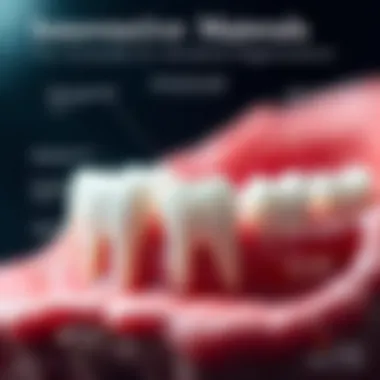
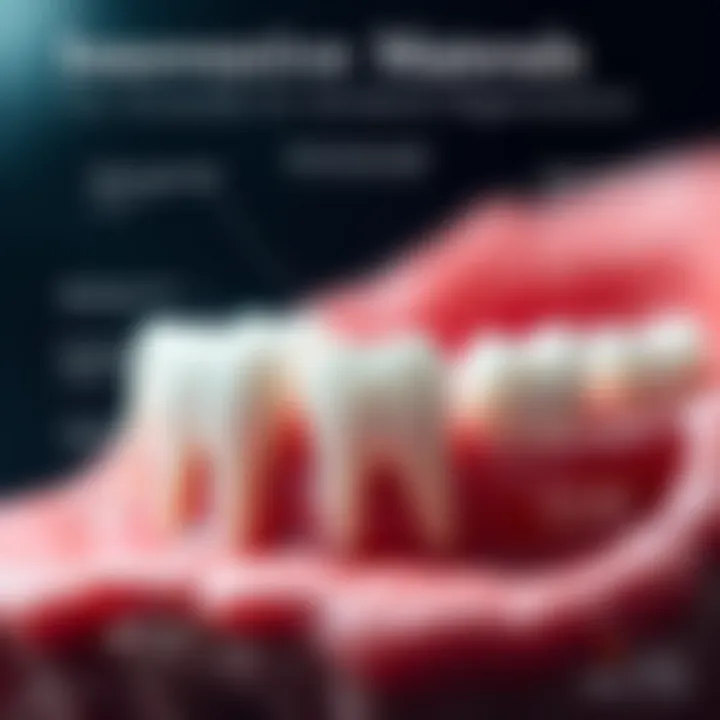
Mineralization process
After the matrix is laid down, the next critical step is the mineralization process. This phase involves the deposition of inorganic minerals, predominantly hydroxyapatite, which is responsible for enamel’s hardness. The minerals accumulate within the matrix, transforming it from a flexible structure into an inflexible, strong protective layer.
A notable characteristic here is the speed of mineral deposition, which can take mere weeks in humans. This rapid process highlights how effective enamel can be formed under optimal conditions. It makes mineralization a popular focus in discussions about enamel health because the integrity of this process shapes long-term dental health outcomes.
The downside? If dietary influences lead to an acidic environment, it can hinder mineralization, potentially leading to enamel erosion. Thus, understanding the nuances of this phase contributes invaluable insights for potential enamel regeneration strategies.
Final maturation of enamel
Once the mineralization wraps up, the final stage is the final maturation of enamel. At this point, the enamel undergoes a further hardening process whereby the remaining organic components are removed. Ameloblasts retract and finish mineralizing the matrix, resulting in a highly mineralized and crystalline structure that gives enamel its remarkable durability.
This stage is characterized by achieving maximum density, which inherently links to enamel's ability to withstand external pressures and resist decay. Its significance in the process of enamel regeneration cannot be overstated, as a properly matured enamel layer is not only critical for function but also for aesthetics.
Unfortunately, this final step may also be influenced by external factors, such as environmental conditions and health status, affecting lasting characteristics. Emphasizing this stage aids in comprehending the full cycle of enamel development, which can inform practices edging towards enamel regeneration.
Influences on Enamel Development
Genetic factors
Genetic factors play a central role in the development and strength of enamel. Variations in genes related to enamel proteins can lead to differences in thickness and resistance to caries. The hereditary nature of dental traits underscores why genetic influences are a key element in this article. Understanding how genetics affect enamel can help researchers pinpoint areas for potential intervention or enhancement in regeneration strategies.
Nutritional influences
Nutrition is another cornerstone of enamel development. Essential vitamins and minerals, particularly calcium and phosphorus, are pivotal for forming a healthy enamel structure. A deficiency in nutrients can result in compromised enamel integrity, leading to conditions like hypoplasia. This presents nutrition as a beneficial aspect of the article, illustrating the tangible effect of diet on dental health. By gaining insights into nutritional impacts, interventions in dental care can be considered further, paving the way for improved enamel regeneration techniques.
Environmental factors
Environmental factors, including exposure to water fluoridation levels and local dietary habits, significantly influence enamel formation. For instance, areas with high fluoride exposure may see stronger enamel development, while those with acidic food prevalence may witness erosion.
This interaction between environmental influences and enamel characteristics is particularly relevant for comprehensive discussions surrounding enamel health and regeneration. Thus, exploring these factors enriches the dialogue on how to safeguard tooth enamel while opening avenues for future research into enamel regeneration.
"Tooth enamel is a delicate balance of biological, nutritional, and environmental elements, shaping the canvas upon which our smiles are painted."
By diving into these stages of amelogenesis and exploring the influences around it, this section emphasizes the foundation necessary for understanding enamel's vulnerability and highlights the avenues available for potential regeneration.
Causes of Enamel Erosion
Understanding the factors leading to enamel erosion is crucial for exploring strategies in regenerating tooth enamel. Enamel plays an essential role in protecting our teeth from decay, yet it can be significantly diminished due to various causes. Identifying these causes not only helps in the prevention of further erosion but also highlights the paths toward effective management and restoration of this vital dental structure. By recognizing the relationship between daily habits, dietary choices, and various health conditions, individuals can take proactive measures to safeguard their enamel and, in turn, enhance their overall oral health.
Dietary Impacts
Diet stands tall among the most considerable influences on the health of tooth enamel. Choices we make every day about what to eat and drink can either bolster or hinder our enamel’s integrity. Let's examine some key dietary elements that can cause enamel erosion.
Acidic foods and beverages
Acidic foods and drinks—think citrus fruits, soft drinks, and pickled items—are notorious for their role in enamel erosion. The acidic nature of these foods can lead to a process called demineralization, where minerals, especially calcium and phosphate, are leached out from the enamel layers. A notable characteristic of these items is that they're often enjoyed for their delightful flavors; however, their acidic content poses a risk. A unique aspect of this influence is that while some acidic foods, like fruits, can be part of a nutritious diet, moderation is key. It might be wise to pair these items with other foods, such as cheese or nuts, to help neutralize the acids and protect enamel health.
Sugar consumption
Sugar consumption is another heavy hitter in the world of enamel erosion. When sugary foods are consumed, they interact with bacteria in the mouth, producing acids as a by-product. This process can significantly accelerate tooth decay and enamel wear. The sheer availability of sweets—from candy to desserts—makes sugar a prevalent option for many. Its unique feature lies in the immediate energy boost it can give; yet, this comes at a cost. Understanding the balance between enjoying treats and maintaining dental health is essential. Reducing sugary snacks and opting for alternatives like fruits or unsweetened products can go a long way toward preserving enamel.
Mineral deficiencies
Mineral deficiencies, particularly those affecting calcium and phosphorus levels, can severely impact enamel strength. When these key minerals are lacking, the enamel's density might decrease, making it more susceptible to erosion. This condition is often overlooked, as many may not consider the nutritional aspects of dental health. A unique aspect of this deficiency is its dual impact—prolonged mineral deficit not only leads to weaker enamel but can affect the body's overall mineral balance, further complicating health. For individuals concerned about oral health, consuming a balanced diet rich in dairy products, leafy greens, and nuts can provide support for enamel formation and preservation.
Behavioral and Health Factors
Aside from dietary habits, various behavioral and health-related factors also play a significant role in enamel erosion. It is vital to understand these influences as they often stem from everyday practices or underlying health issues that may not be immediately apparent.
Brushing techniques
Effective brushing techniques can make a world of difference in maintaining enamel. Using a soft-bristled toothbrush and gentle motions can help minimize wear. A common mistake is brushing too hard or using abrasive toothpastes that can scratch the enamel. This faulty technique can lead to micro-abrasions over time, exacerbating enamel loss. Adopting a proper brushing method not only protects enamel but also helps in other areas of oral hygiene. Educating oneself on how to brush effectively can substantially contribute to enamel health and longevity.
Dry mouth conditions
Dry mouth, or xerostomia, is often a side effect of medications or health conditions. Saliva serves as the mouth's natural defense against acid. When saliva production diminishes, the mouth cannot neutralize acids effectively, leading to increased erosion risk. This condition is often forgotten by many, yet it is crucial for maintaining oral health. Staying hydrated and possibly using mouthwashes that help stimulate saliva production can be beneficial strategies to counteract dry mouth, ultimately protecting enamel integrity.
Medical conditions affecting enamel
Certain medical conditions, such as acid reflux or eating disorders, significantly affect enamel erosion. The stomach acids associated with these conditions can directly come into contact with teeth, leading to severe erosion. Highlighting the severity of these medical issues is vital for understanding their broader implications on dental health. If individuals are aware of their health conditions and their potential impacts, they can reach out to healthcare providers for management plans that illustrate their connection to oral health. Both preventative and palliative approaches can be adopted to mitigate the risk of enamel loss, ensuring that individuals maintain a healthy smile.
"Enamel erosion is not just a dental problem; it's a reflection of overall health choices and conditions."
Recognizing the causes of enamel erosion sets the stage for adopting best practices in prevention and management. By considering both dietary habits and behavioral factors, individuals have the opportunity to influence enamel health positively.
Potential for Enamel Regeneration
Exploring the potential for enamel regeneration holds significant weight in dental science. The clinical implications and possible advancements could revolutionize how we approach dental care. Enamel, the body’s hardest substance, unfortunately, does not regenerate in the same manner as other bodily tissues. This characteristic underlines the importance of innovations aimed at stimulating enamel repair and regeneration.
Understanding how to effectively rejuvenate this vital tissue not only enhances dental aesthetics but also plays a crucial role in maintaining oral health. Effective methods could potentially reduce the risk of cavities and other dental maladies associated with enamel deterioration.
Biological Mechanisms of Regeneration
Dental Stem Cells
Dental stem cells are a key player in the quest for enamel regeneration. They are unique not only for their ability to differentiate into various cell types necessary for tissue repair but also for their presence within the dental pulp, where they reside safely until needed. These cells have a remarkable trait: they can regenerate dentin, a neighboring structure of enamel that can aid in the overall restorative process.
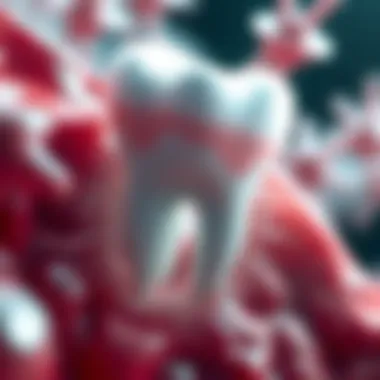
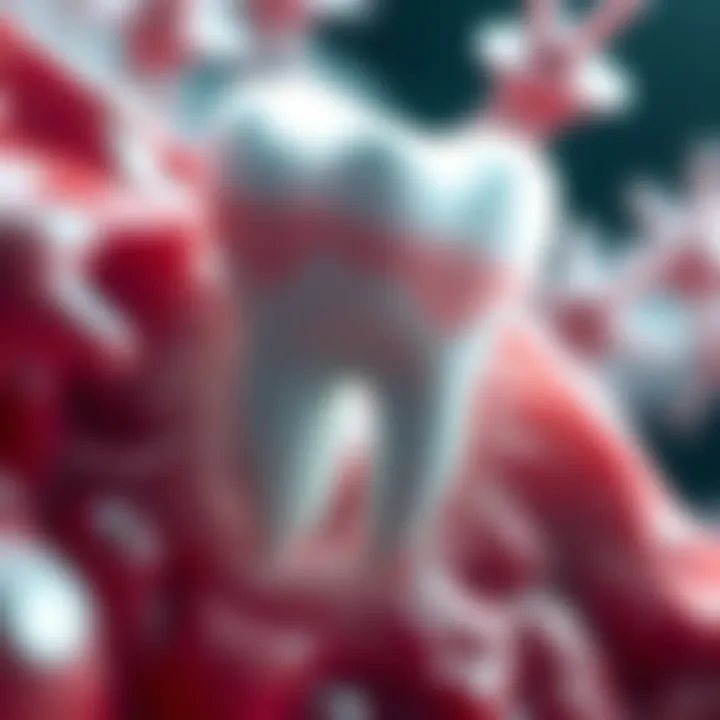
With the capacity to self-renew, dental stem cells provide a promising avenue for enhancing the regenerative procedures in dentistry. Utilizing these cells in conjunction with enamel regeneration techniques opens up a frontier that could lead to stronger, healthier teeth.
Advantages:
- High regenerative potential,
- Ability to differentiate into multiple cell types,
- Presence in a readily accessible area of the tooth.
Disadvantages:
- Isolation procedures can be complex,
- Limited understanding of how these cells interact with existing tooth structures.
Role of Matrix Proteins
Matrix proteins serve as the scaffolding for enamel formation. They play a pivotal role in regulating enamel mineralization and transporting essential proteins needed for proper development. These proteins, including amelogenins and enamelins, create an environment conducive for the deposition of minerals like hydroxyapatite.
A notable characteristic of matrix proteins is their influence on the physical properties of the enamel, affecting hardness and resilience. When understanding enamel regeneration, recognizing the interplay between these proteins and new materials is crucial. Adequate amounts of matrix proteins could make a significant difference in the durability of restored enamel.
Advantages:
- Essential for the organization of enamel crystals,
- Promotion of mineral deposition,
- Potential to enhance bonding to restorative materials.
Disadvantages:
- Variable expression levels may affect outcomes,
- Further research is needed to fully exploit their properties in clinical settings.
Influence of Salivary Components
Saliva contributes to enamel health far more than many realize. It contains minerals, buffers, and proteins that help remineralize early enamel lesions. Compounds found in saliva, such as calcium and phosphate, are crucial for maintaining enamel integrity and providing the necessary components for repair.
The unique aspect of salivary components is their natural occurrence in the oral environment, making them an interesting focus for developing preventive and restorative strategies. However, factors like xerostomia, often seen in those with certain health conditions, can drastically reduce saliva efficacy.
Advantages:
- Free and easily accessible source of minerals,
- Provides natural protection and repair
- Aids in the neutralization of acids from foods.
Disadvantages:
- Can be inhibited by various health conditions,
- Not always effective in higher degrees of enamel erosion.
Innovative Research Approaches
Tissue Engineering Techniques
Tissue engineering stands at the forefront of enamel regeneration strategies. By combining principles from biology with artificial materials, researchers aim to create scaffolds that can support the growth and integration of enamel-like tissues. This method's key characteristic is its ability to mimic natural tooth formation.
By utilizing suitable cell types and biomaterials, tissue engineering seeks to produce enamel structures capable of surviving within the oral environment, enhancing overall durability. It may offer solutions to traditional grafting methods that involve more invasive surgical procedures.
Advantages:
- Potential for highly customized tooth restoration,
- Use of biocompatible materials minimizes rejection,
- Greater complexity in mimicking natural enamel formation.
Disadvantages:
- High research and development costs,
- Limited understanding of long-term integration in human subjects.
3D Bioprinting Applications
3D bioprinting represents a leap in precision for enamel reconstruction. This technology allows the layering of cells and biomaterials to create structures that replicate the intricate architecture of actual enamel. Notably, 3D bioprinting enables customized designs suited for individual patients’ dental profiles.
However, the effectiveness of this method for functional integration in the oral cavity remains largely experimental, and studies are ongoing to determine its viability.
Advantages:
- Allows for precise customization in dental solutions,
- Can reduce time for conventional dental procedures,
- Potential for mass production in future applications.
Disadvantages:
- Requires specialized knowledge,
- Long-term effects on oral health and integration are still under investigation.
Nanotechnology in Enamel Restoration
Nanotechnology offers exciting possibilities for dental restorative methods, especially in enamel repair. By manipulating materials at the nanoscale, products can be designed to enhance the mechanical properties of enamel, such as strength and wear resistance. This includes the incorporation of nanoparticles that mimic the mineral structure of enamel.
A particular strength of nanotechnology lies in its potential to seamlessly integrate with existing dental substrates, allowing for effective restoration without significant alteration to the natural tooth structure.
Advantages:
- Improved durability and functionality of restorative materials,
- Greater precision in targeting enamel applications,
- Can enhance traditional dental materials by improving biocompatibility.
Disadvantages:
- Limited understanding of long-term interactions with biological tissues,
- Regulatory challenges surrounding new materials.
Materials for Enamel Reconstruction
The topic of materials for enamel reconstruction is pivotal in the broader discussion of tooth enamel regeneration. Understanding the options available helps in identifying effective treatments for enamel erosion. Emphasizing biocompatibility and innovative properties, these materials not only aim to restore the structural integrity of enamel but also to enhance its natural qualities. This section serves as a thorough investigation into both well-established materials and emerging biomaterials, highlighting their specific roles and potential in dental health.
Biocompatible Materials


Composite resins
Composite resins have gained traction in dental practices due to their adaptability and aesthetic appeal. These materials are composed of a mixture of resin and fine glass particles, making them versatile for a range of dental applications. One specific aspect is their ability to closely mimic the color and translucency of natural enamel, which makes them a favored choice for filling cavities and reconstructing tooth surfaces.
The key characteristic of composite resins lies in their bonding ability. This feature enhances their effectiveness in maintaining tooth structure while also providing a barrier against further decay. Moreover, their application is often simple and non-invasive, which is a significant advantage in restorative procedures.
However, it’s crucial to note that composite resins can have disadvantages, such as susceptibility to wear over time and potential staining, especially from certain foods and beverages. Despite these drawbacks, they remain a valuable option for effective enamel reconstruction due to their aesthetic properties and ability to bond with existing tooth structure.
Glass ionomer cements
Glass ionomer cements are another valuable material used in the restoration of tooth enamel. These cements are known for their adhesive properties and ability to release fluoride over time, which contributes to ongoing enamel remineralization. Their chemical composition allows for chemical bonding with both enamel and dentin, making them an ideal choice for areas requiring durable attachment.
The unique feature of glass ionomer cements is their inherent fluoride release. This characteristic not only aids in inhibiting further decay but also plays a role in the overall health of the tooth structure. Their use in pediatric dentistry is especially significant as they cater to the needs of younger patients who may require multiple treatments throughout their dental development.
However, glass ionomer cements can be less aesthetic in appearance compared to composite resins, often lacking the translucent look that some patients desire. Additionally, they may not possess the same level of strength as composites, which limits their use in certain high-stress areas of the mouth.
Bioresorbable scaffolds
Bioresorbable scaffolds represent a more innovative approach to enamel reconstruction. These materials are designed to support the growth of new tissue and facilitate the body's natural healing processes. Their composition allows them to gradually degrade in the body, minimizing the need for a second surgery to remove them after they have fulfilled their purpose.
The key characteristic of bioresorbable scaffolds is their ability to mimic the extracellular matrix found in natural tissues. This feature is crucial as it guides the growth of new cells towards enamel regeneration. The scaffolds can be infused with growth factors or other agents to enhance their efficacy, meaning they are not only supportive structures but can actively participate in the healing process.
Despite their remarkable qualities, challenges exist with bioresorbable scaffolds. For one, their degradation rate must align perfectly with tissue healing times to avoid premature loss of support. Additionally, the development of these materials can be more complex compared to traditional options, requiring specialized manufacturing techniques.
Emerging Biomaterials
Hydroxyapatite replacement
Hydroxyapatite replacement involves using synthetic compounds that mirror the natural mineral composition of tooth enamel. This approach aims to replace lost minerals and promote regeneration of enamel integrity. The high biocompatibility of hydroxyapatite makes it particularly appealing as it supports the safety and effectiveness of dental treatments.
Moreover, one unique feature of hydroxyapatite is its direct roles in remineralization processes. It can bond effectively with existing enamel, facilitating the restoration of structural integrity. As a result, it provides not just a surface solution but enhances the overall health of the tooth.
However, a challenge associated with hydroxyapatite replacement is the current limitation in its ability to fully mimic the complex structure of natural enamel. While advancements are being made, researchers are still working to optimize its effectiveness in clinical applications.
Calcium phosphate coatings
Calcium phosphate coatings are designed to provide a protective layer over tooth enamel, contributing to its strength and resistance to future erosion. They can enhance remineralization processes while supplying essential elements needed for enamel health. Their ability to form a bond with the tooth surface helps to create a barrier that combats the effects of acidic beverages and foods.
The standout characteristic of calcium phosphate coatings is their slow-release feature, slowly delivering minerals to the surrounding enamel over time. This sustained release can be particularly beneficial for ongoing protection against decay and erosion.
That said, one potential drawback is that the application of these coatings can sometimes require specific techniques and expertise, which may not be universally available in all dental practices. Furthermore, there is ongoing research to navigate the durability and longevity of these coatings under different oral conditions.
Self-healing materials
Self-healing materials offer a fascinating approach to enamel reconstruction, embodying a remarkable trait of autonomously repairing themselves when damaged. These materials typically incorporate mechanisms that allow for damage recovery through intrinsic chemical reactions, effectively restoring their integrity without external intervention.
The key characteristic that makes self-healing materials appealing is their potential for enhanced durability. Unlike traditional materials that might fracture or wear over time, these can maintain their structural integrity, reducing the need for frequent replacements or repairs. This capability can significantly benefit restorative dentistry by improving patient outcomes.
However, as exciting as this concept is, self-healing materials remain largely experimental. Challenges surrounding the manufacturing processes and practical applications still require thorough exploration and refinement. As a field, it holds promise but also necessitates careful consideration of real-world implementations.
Investment in research on these advanced materials can shape the future of restorative dentistry and enhance patients' dental health dramatically.
Future Directions in Enamel Regeneration
The evolving landscape of dental science brings us to the ever-pertinent topic of enamel regeneration. Innovations in this area hold great promise for enhancing dental health and preserving the longevity of natural teeth. The advancement of scientific knowledge and technology provides a framework for new strategies that could reshape dental care as we know it. This section will delve into various avenues being explored, focusing on how these future directions can enhance overall dental health and the implications they may have on clinical practices.
Integration of Technologies
Multifunctional biomaterials
Multifunctional biomaterials are at the forefront of enamel regeneration efforts. These materials are designed to serve multiple roles simultaneously, thus enhancing their effectiveness in dental applications. One key characteristic of these biomaterials is their ability to not only restore enamel but also to actively contribute to its regeneration by encouraging mineral deposition. This unique feature makes them a beneficial choice as they can offer added protection against future dental issues and improve the structural integrity of the tooth. Utilizing multifunctional biomaterials can present some challenges, such as biocompatibility and the long-term stability of these materials within the oral environment, but their potential to actively participate in the repair and enhancement of enamel makes them a strong candidate in ongoing research.
Smart dental systems
Smart dental systems represent another exciting advancement in enamel regeneration. These systems often incorporate various technologies such as sensors, data analytics, and AI to provide comprehensive care. A distinct trait of smart systems is their ability to monitor dental health in real-time, allowing for timely interventions. The integration of these systems helps reduce the frequency of serious dental conditions by facilitating early detection and personalized treatment plans. While implementing smart dental systems can be costly and may require extensive training for practitioners, their long-term benefits, such as improved patient outcomes and lowered treatment costs, make them an attractive option for the future of dental practice.
Personalized treatment approaches
Personalized treatment approaches focus on tailoring interventions to the individual needs of patients. This method hinges on understanding genetic, lifestyle, and environmental factors that contribute to enamel health. One of the salient characteristics of personalized treatment is its capacity to maximize effectiveness by targeting specific issues that a patient may face; this could involve unique dietary plans, specialized oral care products, or even individualized restorative procedures. Although this approach can result in more favorable outcomes for patients, it requires a detailed understanding of each patient's history and preferences, which may complicate treatment processes if not managed properly.
Impacts on Dental Practice
Preventive dental care strategies
Preventive dental care strategies are increasingly recognized as essential components in the future of enamel regeneration. By focusing on maintaining enamel integrity before serious damage occurs, these strategies can significantly lower the incidence of cavities and other dental issues. A key characteristic here is their proactive rather than reactive nature; preventive measures often include regular dental check-ups, professional cleanings, and public health campaigns aimed at dietary changes.
These strategies not only foster better oral health at the individual level but also have implications for public health outcomes. On the downside, reliance on preventive measures may lead to complacency among some patients, who might neglect their personal responsibilities in maintaining oral hygiene.
Patient education and awareness
Educating patients about their oral health and the significance of enamel preservation has become paramount. Emphasizing awareness around dental hygiene and preventive care is vital for long-lasting health. One notable characteristic of this emphasis on education is the empowerment it gives patients; when individuals understand potential risks and proactive steps they can take, they are more likely to engage in healthy behaviors.
However, there’s a downside: not all patients may be receptive or have access to educational resources, which can exacerbate disparities in dental care.
Regenerative dentistry practices
Regenerative dentistry practices focus on utilizing the latest advancements in research, technology, and materials to promote enamel regeneration. A fundamental aspect of these practices is their holistic approach, incorporating everything from biomaterials to patient-specific care techniques. They strive to not only restore but also enhance the natural abilities of the teeth.
However, as regenerative dentistry progresses, challenges remain, including the high costs associated with advanced treatments and the need for continued research into efficacy and safety.
In conclusiton, future directions in enamel regeneration hold immense potential for reshaping dental practices, promoting better oral health, and enhancing the quality of dental care. The integration of innovative technologies, patient-centric approaches, and preventive strategies will be critical in creating a more resilient dental framework.
By embracing these developments, dental practitioners can better position themselves to address contemporary oral health issues, paving the way for a brighter future in dental care.



